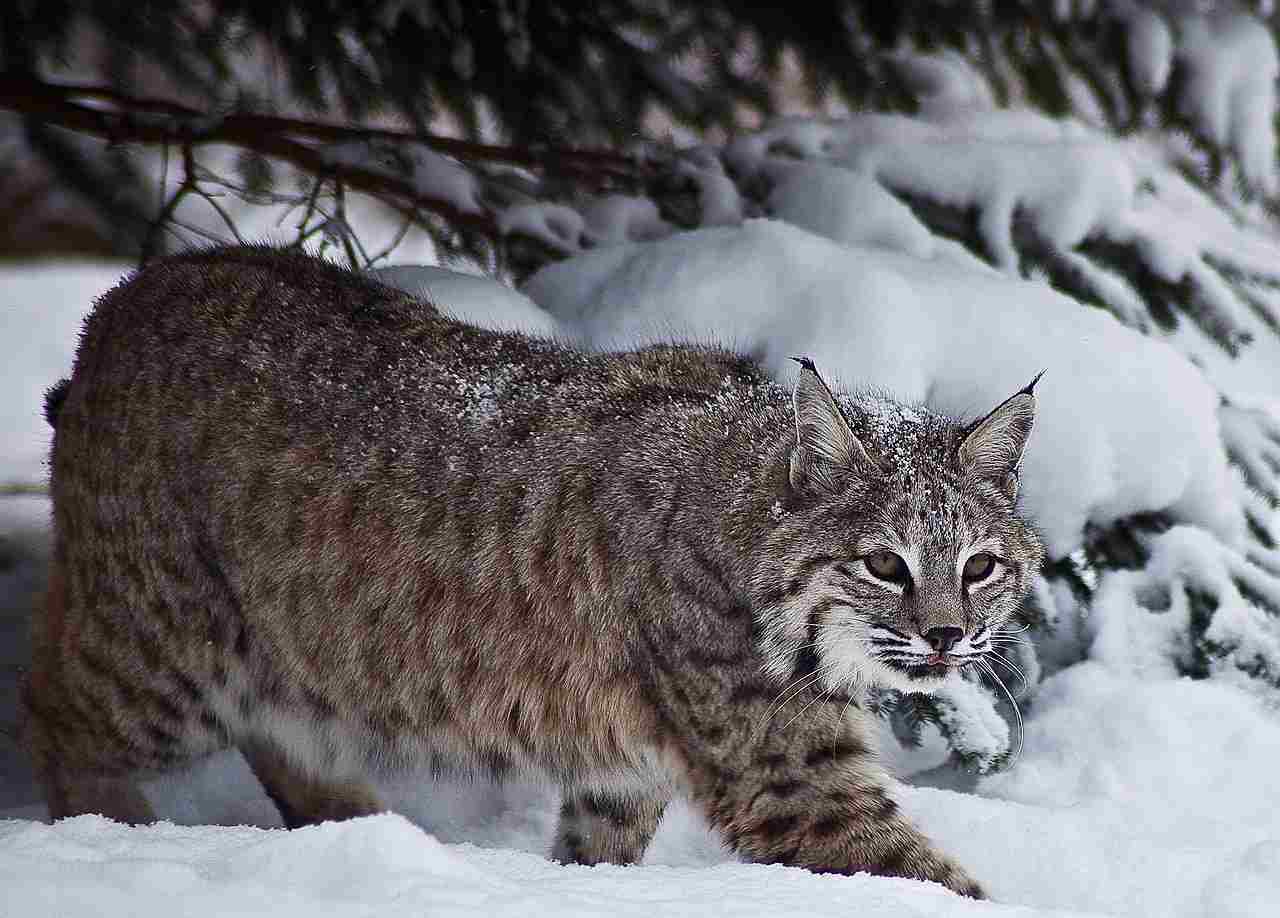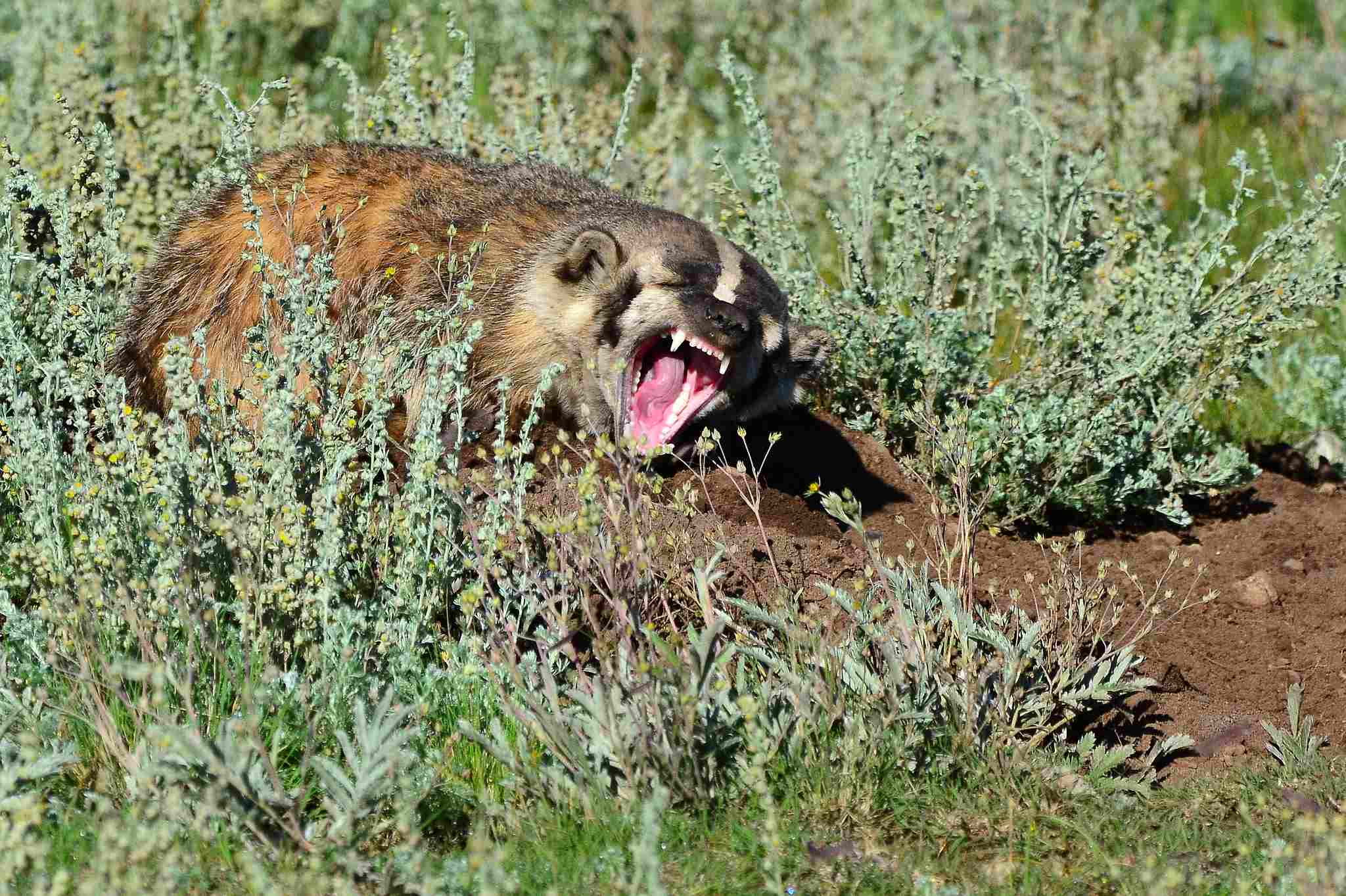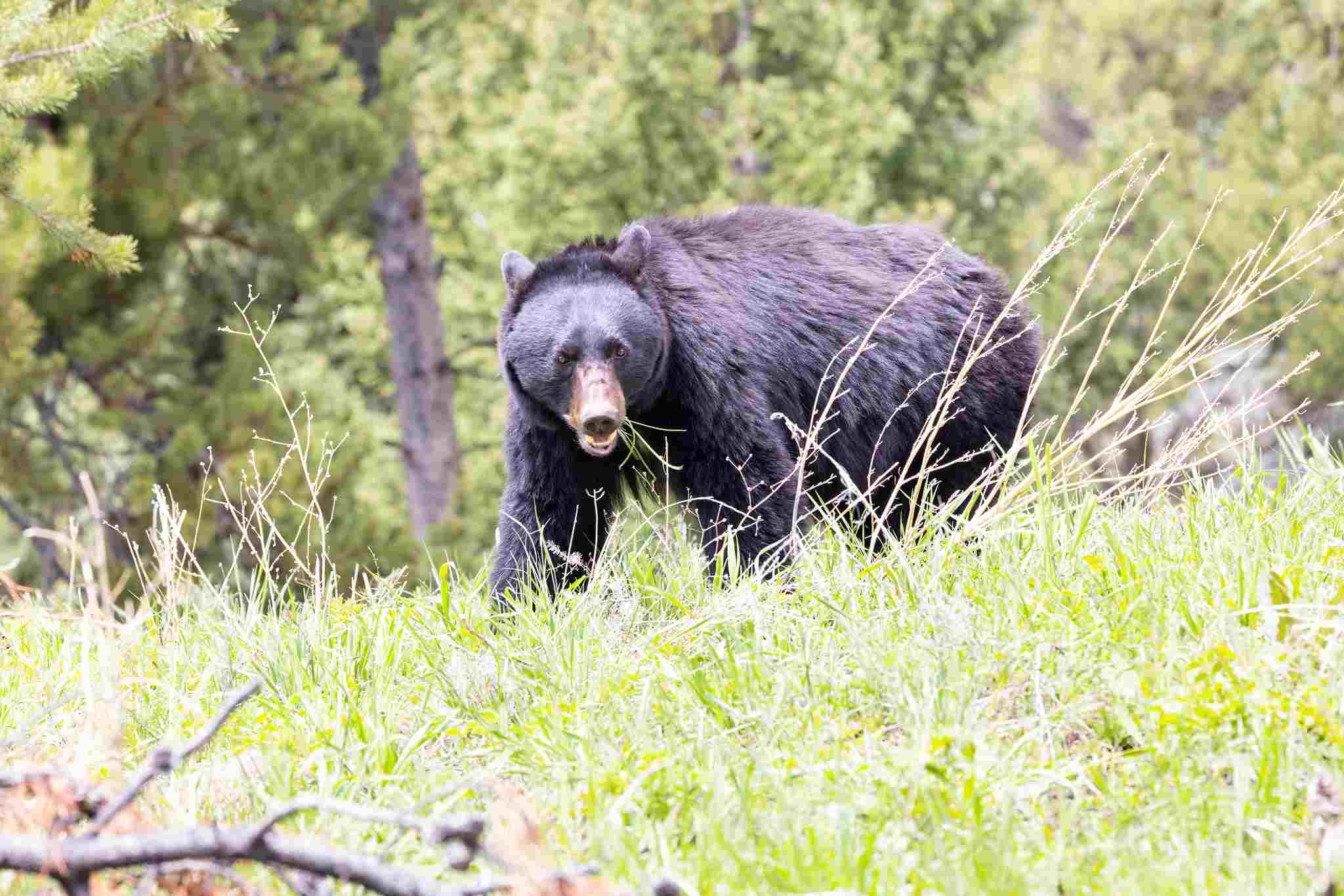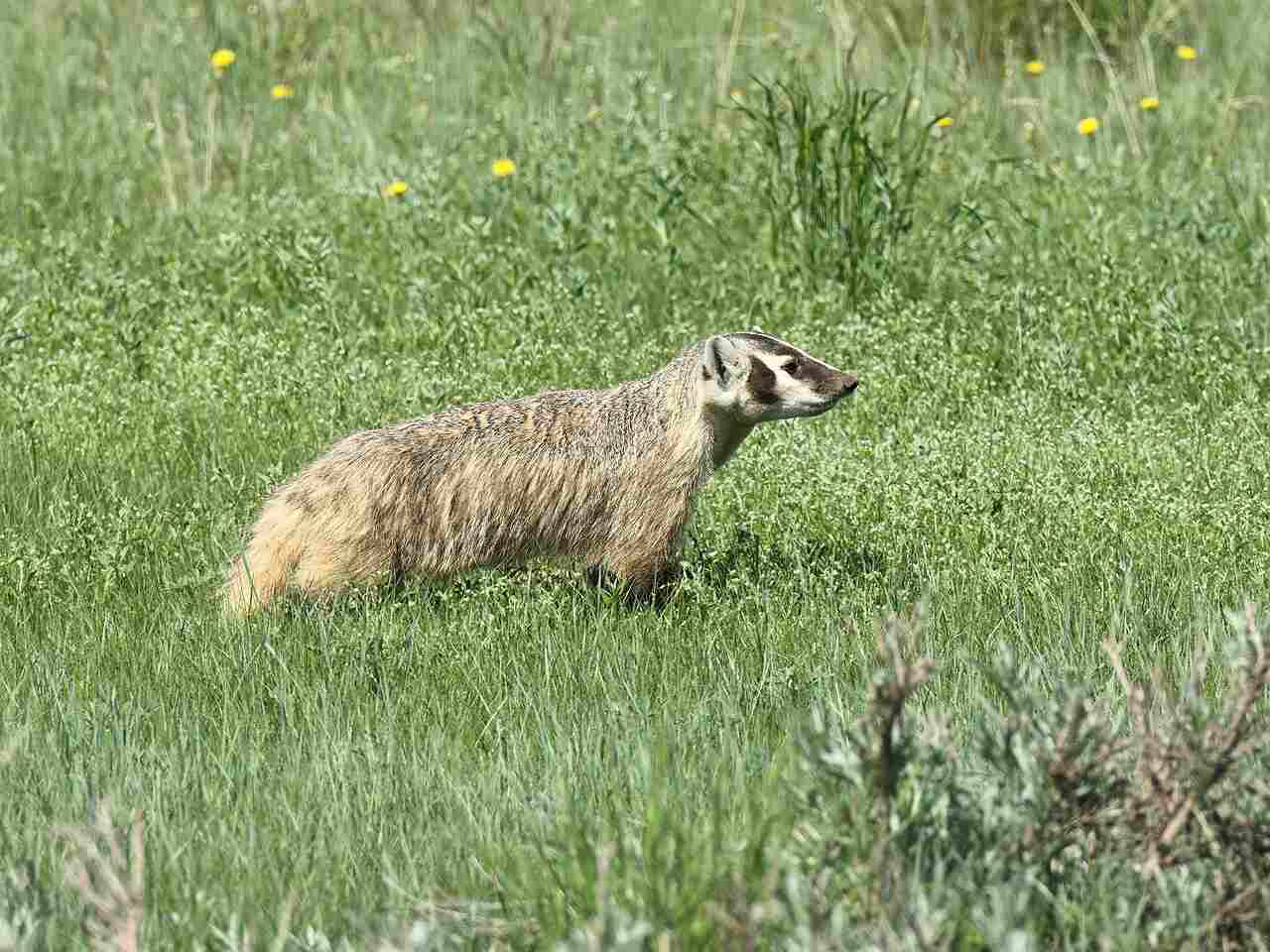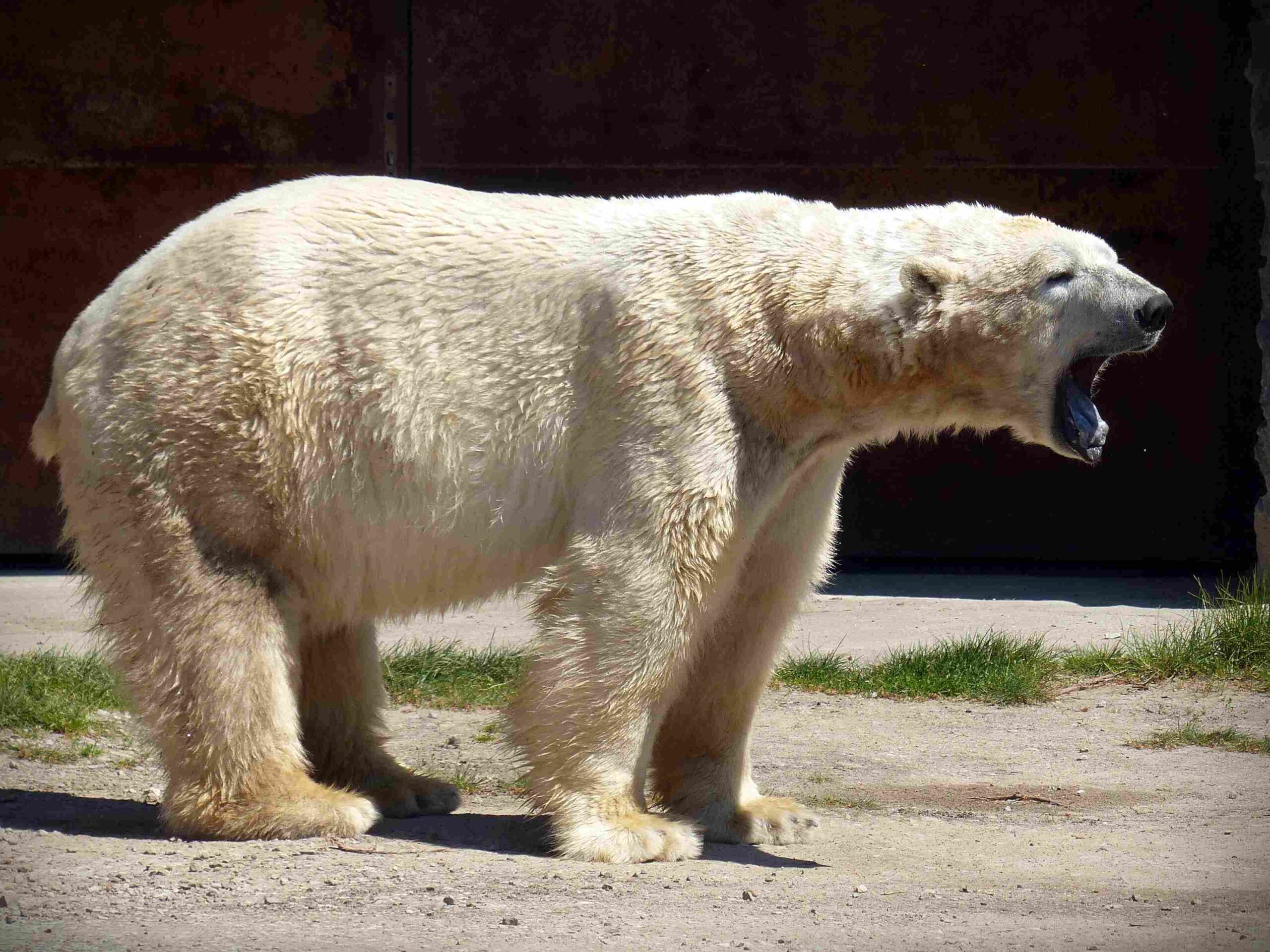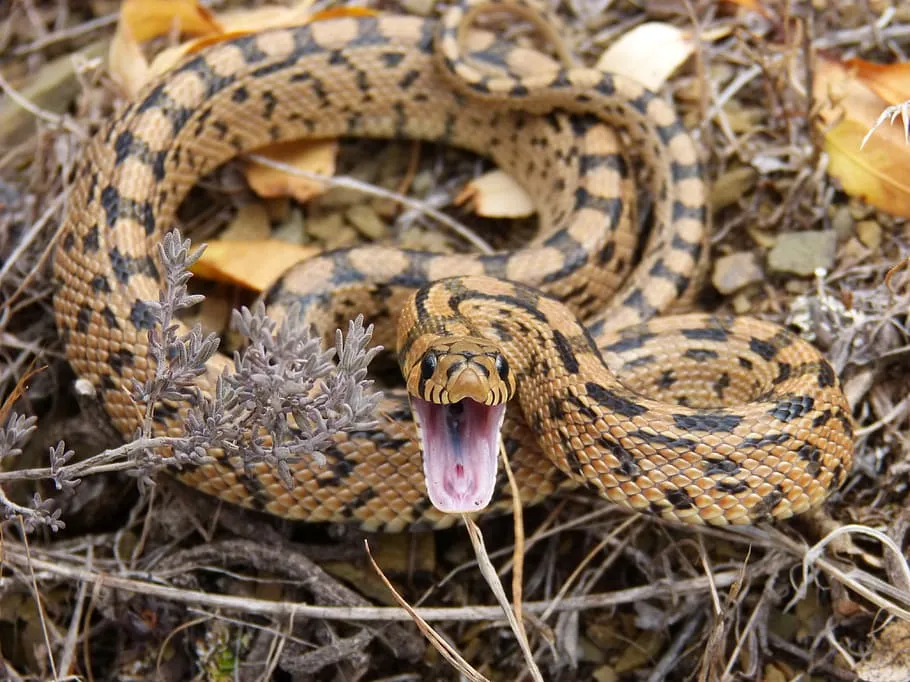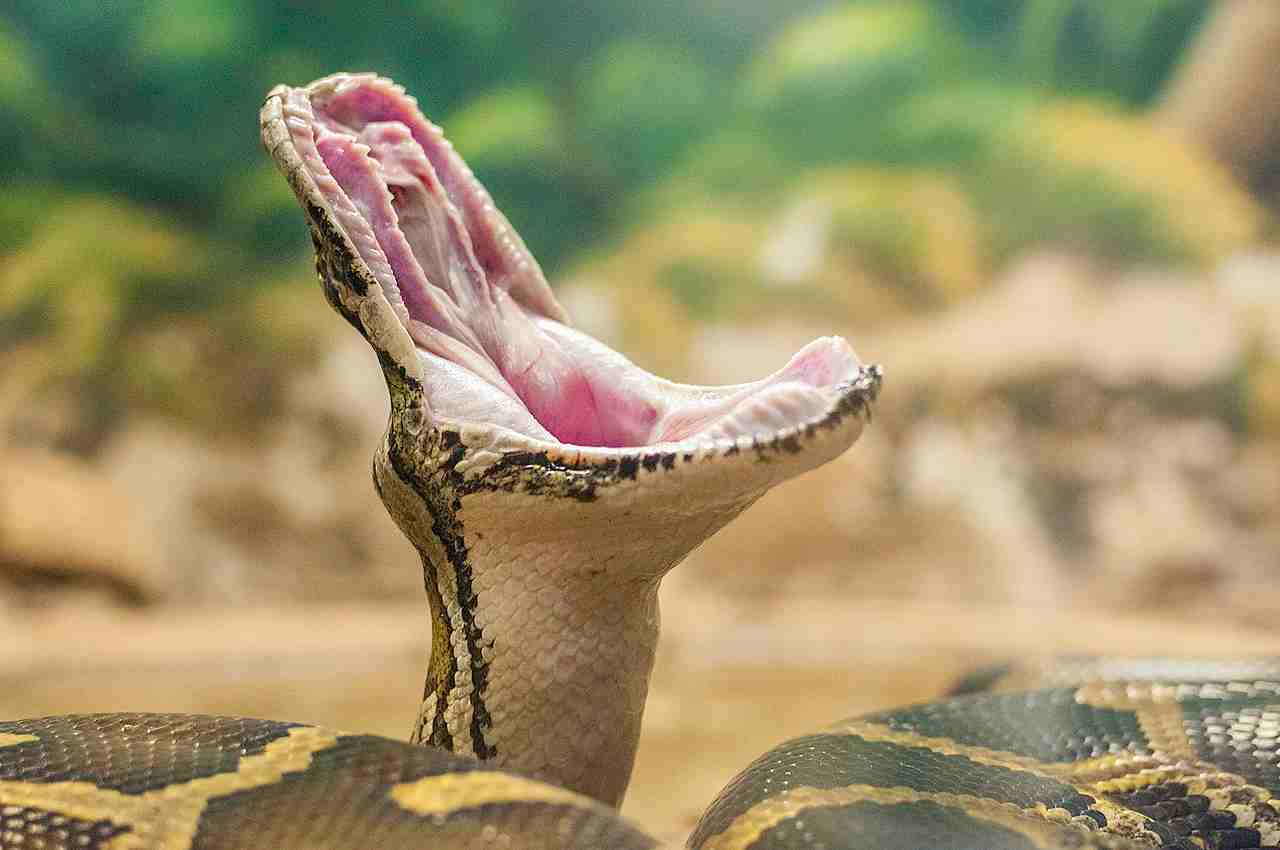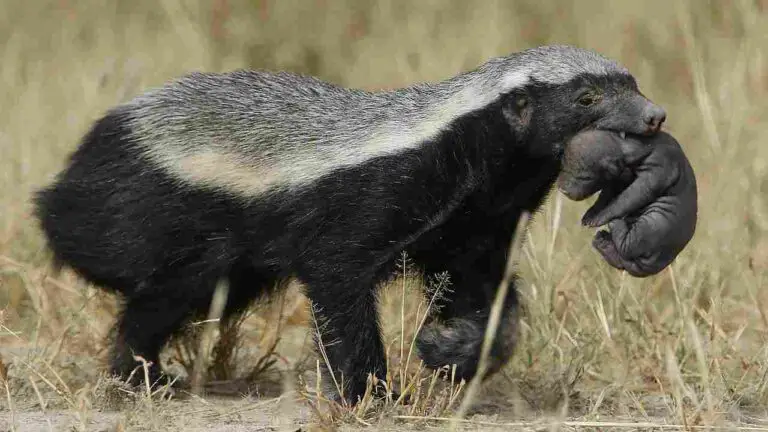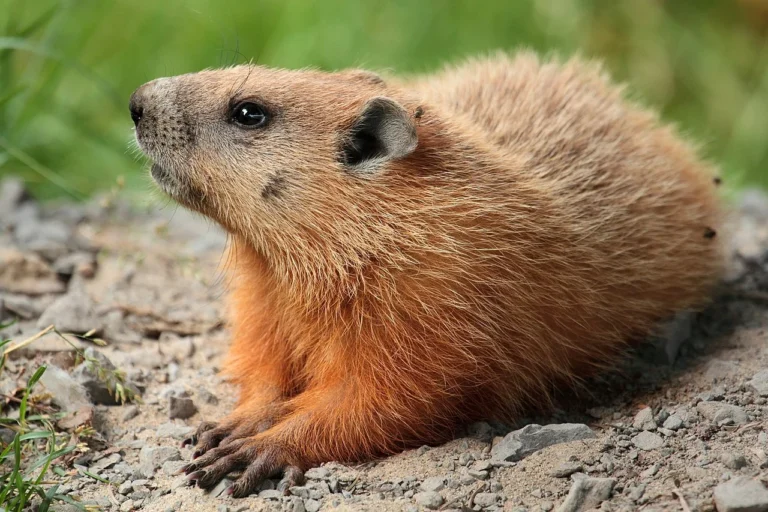23+ Dangerous Animals In Pennsylvania And Their Characteristics
Examples of dangerous animals in Pennsylvania are Black Bears, Copperhead Snakes, and Bobcats. These animals can pose a threat due to their natural defense mechanisms or territorial behavior. Black Bears can become aggressive when protecting their cubs or food sources, while Copperhead Snakes use venom to defend themselves. Bobcats, although generally elusive, may become aggressive when cornered. It’s important to respect these animals’ habitats and take precautions to avoid encounters that could lead to harm.
1. Eastern Timber Rattlesnake
The Eastern Timber Rattlesnake is one of the most venomous snakes in Pennsylvania, inhabiting forests and mountainous regions. This reptile can be identified by its distinct rattle at the tail’s tip and its unique pattern of dark, chevron-like bands across a lighter-colored body. It typically avoids human interaction but will defend itself when threatened, using its potent venom to immobilize prey or deter predators. The bite of an Eastern Timber Rattlesnake can be serious, potentially leading to severe pain, swelling, and other complications, requiring immediate medical attention. Despite its reputation, it plays a crucial role in controlling rodent populations, highlighting the importance of respecting its habitat and exercising caution when exploring areas where these snakes are known to live.
2. Copperhead Snake
The Copperhead Snake is a venomous snake found throughout Pennsylvania, often in wooded areas, rocky hillsides, and near water sources. Named for its coppery-colored head, this snake’s distinctive hourglass pattern on its body helps it blend into leaf litter. Although not typically aggressive, Copperheads will strike if they feel threatened, and their bites can cause significant pain, swelling, and other symptoms, requiring medical attention. Despite their venomous nature, they play an important ecological role in controlling small mammal populations. To avoid encounters, it’s wise to be cautious when hiking and to keep a safe distance if you see one.
3. Black Bear
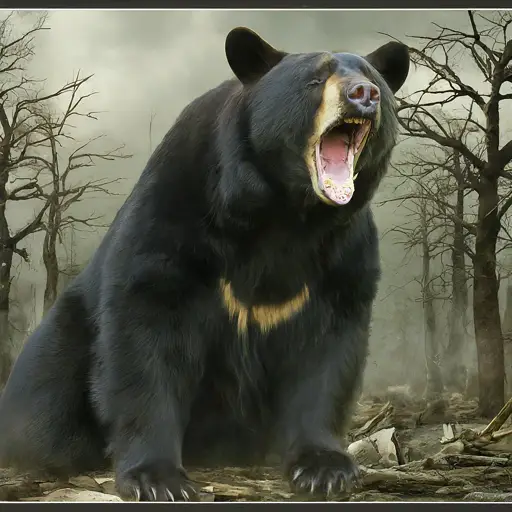
Black Bears are the largest mammals in Pennsylvania, commonly found in forested areas and occasionally venturing into suburban or urban environments. Although generally shy and avoiding humans, they can be dangerous when protecting their cubs or food sources. Black Bears are omnivorous and opportunistic feeders, which can lead them to forage in garbage or campsites. It’s crucial to keep food and waste securely stored when in bear country to avoid attracting them. Encounters should be handled calmly; it’s best to back away slowly and avoid direct eye contact to minimize the risk of aggression.
4. Bobcat
Bobcats are elusive and stealthy predators native to Pennsylvania, typically found in wooded and rocky areas. These medium-sized felines are primarily nocturnal and have a varied diet, including small mammals, birds, and occasionally deer. Although bobcats generally avoid humans, they can pose a risk if cornered or protecting their young. Their distinctive tufted ears and short tails make them easily recognizable. To minimize the chance of encounters, it’s best to keep pets indoors at night and avoid venturing into dense underbrush where bobcats might hide.
5. Coyote
Coyotes are highly adaptable canids found throughout Pennsylvania, from rural to urban areas. Known for their intelligence and versatility, coyotes can be a threat to small pets and livestock but rarely pose a danger to humans. They are most active at dusk and dawn, often hunting in pairs or small groups. To reduce the risk of coyote encounters, it’s advisable to keep pets leashed, secure garbage, and avoid leaving food outside. If approached by a coyote, making loud noises and appearing larger can help deter them.
6. Eastern Massasauga Rattlesnake
The Eastern Massasauga Rattlesnake is a rare and endangered species in Pennsylvania, typically found in wetlands and grasslands. With a stocky body and distinct rattle, this small rattlesnake is often mistaken for non-venomous snakes. Although its bite is venomous, the Eastern Massasauga is reclusive and prefers to avoid human contact. Its venom is less potent than that of other rattlesnakes, but a bite can still cause pain and swelling, requiring prompt medical attention. Conservation efforts are underway to protect this species, emphasizing the need to respect its habitat and avoid disturbing it.
7. Gray Wolf (occasional presence)
The Gray Wolf, although largely extirpated from Pennsylvania, occasionally reappears due to migration from surrounding regions. These majestic predators once roamed widely but were driven out by human activity and habitat loss. When present, Gray Wolves are typically found in forested areas and are more likely to avoid humans. However, they can be dangerous when defending their pack or territory. Encounters are rare, but if you do come across a Gray Wolf, it’s crucial to remain calm, make yourself appear larger, and avoid running, as it can trigger a chase response.
8. Mountain Lion (occasional presence)
The Mountain Lion, or cougar, is a large and powerful predator that occasionally visits Pennsylvania from neighboring states. Typically found in mountainous or heavily forested regions, these big cats are solitary and elusive. Mountain Lions are capable of traveling long distances and can pose a threat to humans if threatened or cornered. To reduce the risk of an encounter, it’s important to be aware of your surroundings when hiking and to avoid hiking alone in remote areas. If confronted by a Mountain Lion, standing tall, making loud noises, and backing away slowly are recommended strategies.
9. Striped Skunk
The Striped Skunk is a common mammal in Pennsylvania, recognized by its black fur with white stripes. While skunks are not typically aggressive, they can pose a risk due to their notorious defense mechanism: spraying a foul-smelling liquid when threatened. They are often found in suburban and rural areas, where they search for food in gardens and trash bins. Skunks are also carriers of rabies, making them potentially dangerous to humans and pets. To avoid encounters, secure trash bins and keep pets indoors at night. If sprayed by a skunk, specialized cleaning products are required to neutralize the odor.
10. Raccoon
Raccoons are widespread in Pennsylvania, known for their distinctive masked faces and dexterous front paws. While they are generally more of a nuisance than a threat, raccoons can become aggressive if they feel cornered or if they are rabid. They are often found in urban and suburban areas, scavenging for food in garbage bins or compost piles. Raccoons can carry rabies, making them dangerous to pets and humans if bitten or scratched. To minimize encounters, keep trash bins secure, avoid feeding them, and never approach a raccoon that appears unusually bold or disoriented.
11. Eastern Cottontail (in the context of rabies)
The Eastern Cottontail is a common rabbit species in Pennsylvania, often seen in fields, gardens, and suburban areas. While typically harmless, these rabbits can be a risk in the context of rabies. Although rare, they can contract and transmit rabies, potentially posing a threat to pets and humans if bitten. It’s crucial to avoid approaching or handling wild rabbits, especially if they appear disoriented or aggressive. If bitten, seek medical attention immediately and report the incident to local health authorities.
12. White-tailed Deer (due to vehicle collisions)
White-tailed Deer are abundant in Pennsylvania and are a common sight in forests and fields. While not typically aggressive, they pose a significant hazard due to their propensity to cross roads and highways, leading to vehicle collisions. These accidents can cause significant property damage, injuries, or even fatalities. To reduce the risk of deer-vehicle collisions, drivers should be extra cautious during dusk and dawn, when deer are most active, and use high beams when appropriate to spot deer along roadsides.
13. Red Fox
The Red Fox is a common predator in Pennsylvania, easily recognized by its reddish fur and bushy tail. Although generally timid around humans, Red Foxes can be dangerous when they carry rabies, which can lead to erratic or aggressive behavior. They are opportunistic feeders, often venturing into urban areas to scavenge for food. To minimize encounters with aggressive foxes, avoid leaving food outside and ensure pets are vaccinated against rabies. If approached by an unusually bold or aggressive fox, avoid direct contact and contact animal control.
14. Fisher
Fishers are elusive carnivores found in the forests of Pennsylvania, known for their agility and climbing abilities. Although not typically aggressive toward humans, fishers are skilled predators that can pose a threat to small pets or livestock. They are primarily active during twilight hours and have a varied diet, including small mammals and birds. Encounters with fishers are rare, but if you do come across one, it’s best to maintain a safe distance and not provoke them. To protect pets and livestock, consider secure enclosures and avoid leaving food outside at night.
15. American Mink
The American Mink is a semi-aquatic mammal found in Pennsylvania’s wetlands and along riverbanks. While not inherently aggressive, mink can become territorial and may attack if they feel threatened or cornered. They are primarily active at night and have a varied diet, including fish, amphibians, and small mammals. Mink can also carry rabies, making them potentially dangerous to humans and pets. To avoid conflicts, it’s important to respect their habitat and avoid disturbing them in the wild. If bitten or scratched by a mink, seek immediate medical attention to prevent rabies infection.
16. Porcupine
Porcupines are slow-moving rodents found in the forests of Pennsylvania, distinguished by their quills, which are a formidable defense mechanism. While porcupines are not aggressive, they can be dangerous if provoked, as their quills can easily detach and become embedded in skin or fur. Removing porcupine quills can be painful and require medical attention to avoid infection. Porcupines are primarily nocturnal and are most active at night. To avoid encounters, it’s best to give them a wide berth and keep pets away from them, as dogs are particularly prone to porcupine quill injuries.
17. Great Horned Owl
The Great Horned Owl is a powerful raptor commonly found in Pennsylvania’s forests and open areas. Recognizable by its tufted “horns,” this owl is an adept hunter, preying on a variety of animals, including small mammals and birds. Although generally not a threat to humans, Great Horned Owls can be aggressive when defending their nests, which are often located in trees or on rocky cliffs. To avoid negative encounters, it’s best to keep a safe distance from their nesting sites and avoid disturbing them. If attacked, covering your head and backing away slowly is the recommended course of action.
18. Bald Eagle
The Bald Eagle, a symbol of the United States, is a large bird of prey found in Pennsylvania, especially near rivers and lakes. While revered for its majestic appearance, the Bald Eagle can be dangerous when protecting its nest or territory. Eagles are known to swoop at intruders and have powerful talons capable of inflicting injury. To prevent confrontations, it’s best to admire Bald Eagles from a distance and avoid disturbing their nesting sites. If an eagle becomes aggressive, maintaining a calm demeanor and slowly retreating is advisable.
19. Northern Water Snake
The Northern Water Snake is a common non-venomous snake in Pennsylvania, often found near bodies of water. Although harmless to humans, they can be aggressive when threatened and may bite in self-defense. Their bite can be painful but is not venomous, and they are often mistaken for venomous snakes due to their similar coloration. To avoid being bitten, it’s best to keep a safe distance from these snakes and avoid startling them. If bitten, clean the wound thoroughly and seek medical attention if necessary.
20. Wild Turkey (rare attacks)
Wild Turkeys are large birds commonly found in Pennsylvania’s forests and fields. While they are generally not aggressive, they can become territorial and may attack if they feel threatened or during the mating season. Wild Turkey attacks are rare but can be dangerous due to their size and sharp beaks and claws. To avoid confrontations, it’s best to give these birds a wide berth, especially during breeding season. If attacked by a Wild Turkey, make yourself appear larger and use loud noises to scare it away.
21. Barn Owl
Barn Owls are graceful nocturnal birds found in Pennsylvania, often nesting in barns or other outbuildings. Although not typically aggressive, they can be protective of their nests and may attack if they feel threatened. Barn Owls are primarily hunters of small rodents and birds, but their sharp talons and beaks can cause injury. To avoid disturbing them, it’s best to keep a safe distance from their nesting sites and avoid bright lights near their habitats at night. If attacked, it’s advisable to cover your head and slowly retreat.
22. Blue Jay (territorial attacks)
The Blue Jay is a colorful and intelligent bird commonly found in Pennsylvania. Known for their striking blue feathers, these birds can be aggressive during nesting season, engaging in territorial attacks to protect their nests. Blue Jays may dive-bomb or peck at perceived threats, including humans and pets. To avoid confrontation, it’s best to stay clear of their nesting sites and avoid provoking them. If attacked, it’s important to stay calm, cover your head, and move away from the area.
23. Common Raven (aggressive behavior)
The Common Raven is a large, intelligent bird found in Pennsylvania’s forests and open areas. Known for their problem-solving skills and adaptability, ravens can become aggressive, especially when defending their nests or scavenging for food. Although they are not typically dangerous to humans, they can deliver a painful peck or dive-bomb intruders. To avoid aggressive behavior from ravens, it’s best to keep a safe distance from their nesting sites and not leave food exposed in outdoor areas. If confronted by a raven, making loud noises and appearing larger can help deter them.
24. Canada Goose (aggressive behavior)
Canada Geese are common in Pennsylvania, often found in parks and near bodies of water. While they are generally peaceful, they can become aggressive when protecting their nests or goslings. Canada Geese are known to hiss, chase, or even attack when they feel threatened. These birds can be dangerous due to their strong wings and beaks. To avoid confrontations, it’s best to keep a safe distance from nesting geese and avoid feeding them, which can increase their aggression. If attacked, back away slowly and avoid eye contact.
| Animal | Description |
| Eastern Timber Rattlesnake |
Venomous snake, typically in forests; bite can cause severe pain and swelling.
|
| Copperhead Snake |
Venomous snake with coppery head; often found in wooded areas.
|
| Black Bear |
Large mammal; can be dangerous when protecting cubs or food sources.
|
| Bobcat |
Medium-sized predator; usually elusive but can be aggressive when cornered.
|
| Coyote |
Highly adaptable canid; rarely dangerous to humans but can threaten small pets or livestock.
|
| Eastern Massasauga Rattlesnake |
Rare venomous snake found in wetlands; typically avoids human contact.
|
| Gray Wolf (occasional presence) |
Large predator; generally avoids humans but can be aggressive when defending its territory.
|
| Mountain Lion (occasional presence) |
Large predator; occasionally visits Pennsylvania; can be dangerous when threatened.
|
| Striped Skunk |
Known for its defensive spray; can also carry rabies.
|
| Raccoon |
Often found in urban areas; potential carrier of rabies; can be aggressive when cornered.
|
| Eastern Cottontail (in the context of rabies) |
Common rabbit; potential rabies carrier; generally not aggressive.
|
| White-tailed Deer (due to vehicle collisions) |
Large mammal; poses risk due to vehicle collisions.
|
| Red Fox |
Generally shy, but can be dangerous if rabid; may threaten small pets or livestock.
|
| Fisher |
Elusive carnivore; can be aggressive if threatened.
|
| American Mink |
Semi-aquatic mammal; can be territorial and may carry rabies.
|
| Porcupine |
Slow-moving rodent; quills can cause injury if threatened.
|
| Great Horned Owl |
Large raptor; can be aggressive when defending its nest.
|
| Bald Eagle |
Large bird of prey; can be dangerous when protecting its territory.
|
| Northern Water Snake |
Non-venomous snake; may bite in self-defense.
|
| Wild Turkey (rare attacks) |
Large bird; can become territorial during breeding season.
|
| Barn Owl |
Nocturnal bird; may be protective of its nest.
|
| Blue Jay (territorial attacks) |
Territorial bird; can be aggressive when protecting its nest.
|
| Common Raven (aggressive behavior) |
Large, intelligent bird; can be aggressive when protecting its nest or scavenging for food.
|
| Canada Goose (aggressive behavior) |
Common bird; can be aggressive when protecting its nest or goslings.
|
